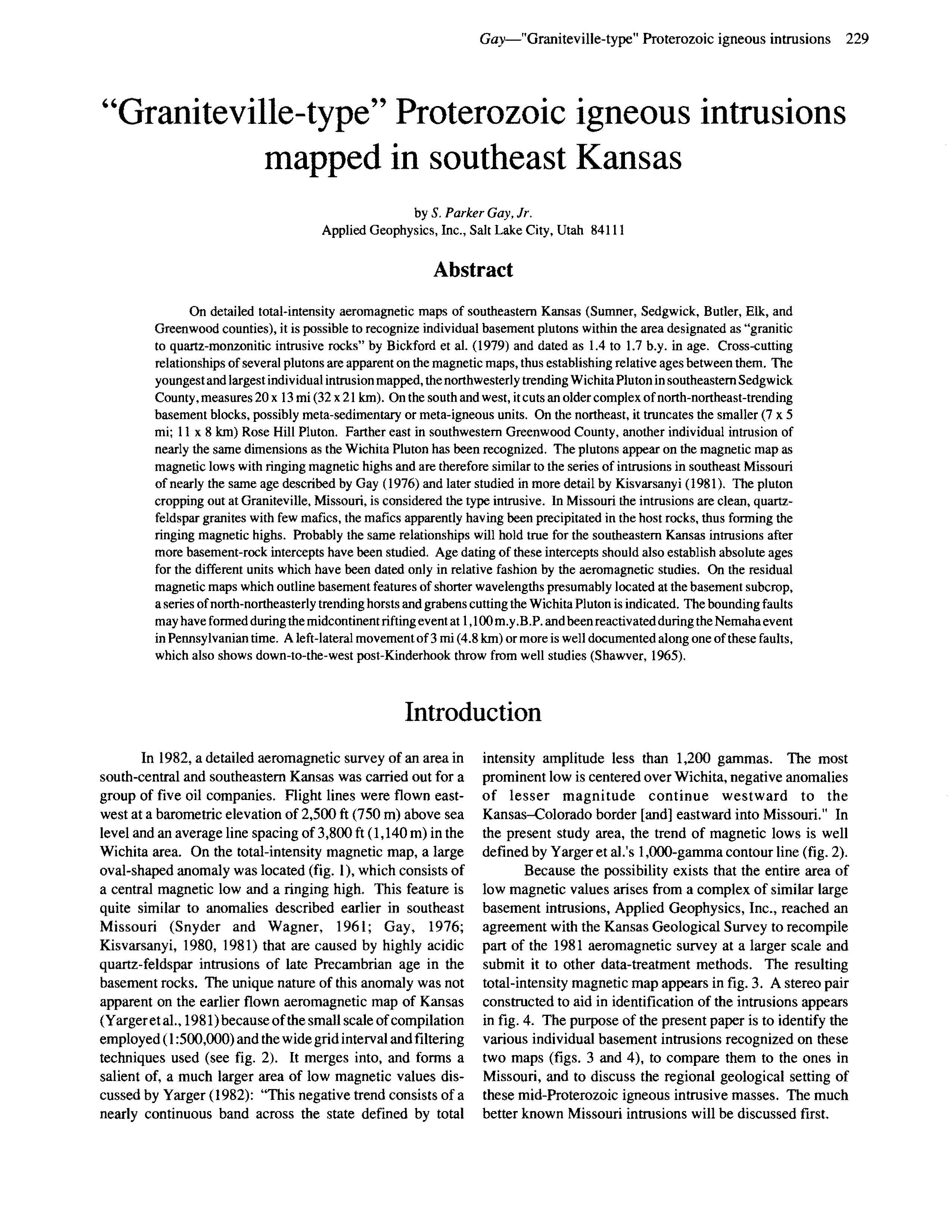"Graniteville-type" Proterozoic igneous intrusions mapped in southeast Kansas
DOI:
https://doi.org/10.17161/kgsbulletin.no.226.20505Abstract
On detailed total-intensity aeromagnetic maps of southeastern Kansas (Sumner, Sedgwick, Butler, Elk, and Greenwood counties), it is possible to recognize individual basement plutons within the area designated as "granitic to quartz-monzonitic intrusive rocks" by Bickford et al. (1979) and dated as 1.4 to 1.7 b.y. in age. Cross-cutting relationships of several plutons are apparent on the magnetic maps, thus establishing relative ages between them. The youngest and largest individual intrusion mapped, the northwesterly trending Wichita Pluton in southeastern Sedgwick County, measures 20 x 13 mi (32 x 21 km). On the south and west, it cuts an older complex of north-north east-trending basement blocks, possibly meta-sedimentary or meta-igneous units. On the northeast, it truncates the smaller (7 x 5 mi; 11 x 8 km) Rose Hill Pluton. Farther east in southwestern Greenwood County, another individual intrusion of nearly the same dimensions as the Wichita Pluton has been recognized. The plutons appear on the magnetic map as magnetic lows with ringing magnetic highs and are therefore similar to the series of intrusions in southeast Missouri of nearly the same age described by Gay (1976) and later studied in more detail by Kisvarsanyi (1981). The pluton cropping out at Graniteville, Missouri, is considered the type intrusive. In Missouri the intrusions are clean, quartz-feldspar granites with few mafics, the mafics apparently having been precipitated in the host rocks, thus forming the ringing magnetic highs. Probably the same relationships will hold true for the southeastern Kansas intrusions after more basement-rock intercepts have been studied. Age dating of these intercepts should also establish absolute ages for the different units which have been dated only in relative fashion by the aeromagnetic studies. On the residual magnetic maps which outline basement features of shorter wavelengths presumably located at the basement subcrop, a series of north-northeasterly trending horsts and grabens cutting the Wichita Pluton is indicated. The bounding faults may have formed during the midcontinent rifting event at 1,100 m.y. B.P. and been reactivated during the Nemaha event in Pennsylvanian time. A left-lateral movement of 3 mi (4.8 km) or more is well documented along one of these faults, which also shows down-to-the-west post-Kinderhook throw from well studies (Shawver, 1965).
Downloads

